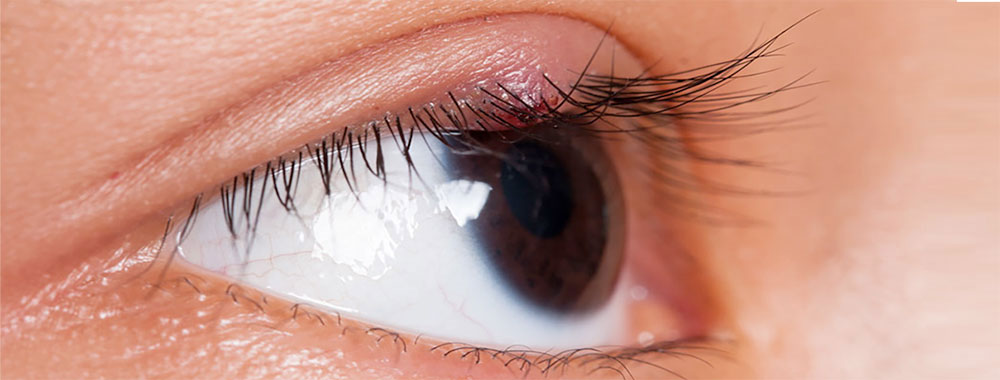
What’s this bump in my eyelid? A simple question, but the answer can be confusing. The shortest and simplest response is: If it doesn’t hurt anymore, it’s a chalazion. If it’s still painful, it’s a stye.
If you’re wondering (and of course, how could you not), chalazion is pronounced with a hard “ch”, as if it were spelled “kalazion.” Aptly, chalazion comes from the Greek word for a hailstone, and the plural of chalazion is chalazia. Stye can also be spelled as a sty, which also means pigpen. Pigpen is cute in a Peanuts cartoon, but not cute on the eye.
But the two conditions are inextricably intertwined. So, here’s some explanatory pronunciation, spelling, and a little etymological housekeeping.
What is a stye in the eye?
A stye is a painful localized bacterial infection in an eyelid. Stye infections arise either in a follicle at the base of an eyelash (an external hordeolum), or within a blocked oil-producing gland inside an eyelid (an internal hordeolum). A stye will usually develop a yellow or white pimple inside the eyelid. Do not try to pop it!
What are meibomian glands?
Meibomian glands are large oil-producing glands located in the eyelid. They secrete oil with every blink and provide the eye with the outermost layer of the tear film. Without this oily layer, the watery component of the tear film will evaporate too quickly and ultimately cause dry eye. These glands, like all of the oil glands in the face, can easily get clogged.
What is a chalazion?
A chalazion is a painless bump on the eyelid, usually with no infection. It can be the aftermath of a stye, after the infection has resolved, or it can arise directly from a blocked meibomian gland, without an intervening infection.
A chalazion can sometimes get so large and obtrusive that it blocks and blurs your vision.
What causes styes and chalazia?
The causes for most styes and chalazia are obscure. But risk factors for both include:
- Having the eyelid inflammation known as blepharitis
- Having skin conditions such as seborrhea, acne, or rosacea
- Tuberculosis
Styes and chalazia are also more common in people with viral conjunctivitis, or with an infection inside the eyelids, or inside the eye itself.
How long do styes and chalazia take to heal?
Most eyelid bumps, whether painful or not, resolve on their own. A stye infection will usually heal within a week or two. Chalazia generally take longer. They can take up to a month to disappear.
How are styes and chalazions treated?
Home treatments along with antibiotics and steroid drops are used to heal an eyelid bump, whether it’s currently infected or not.
- Hold a warm compress gently against your eye for five minutes several times a day for several days. The warm compress will give the stye or chalazion an opportunity to drain and restore the normal function of the meibomian gland.
- Keep your hands clean and don’t rub your eyes.
- Don’t squeeze a stye or chalazion. This won’t help it heal and could cause complications.
- Take your eye drops, ointments, and/or oral pills as directed by your doctor.
It is important to see your ophthalmologist as soon as possible to avoid the infection spreading in the eyelid. As a last resort, if the bump persists can be removed surgically, in a simple office procedure under local anesthesia. Also, sometimes (very rarely) a tumor in the eyelid masquerades as a chalazion.
Why choose Assil Gaur Eye Institute for your eye care?
The doctors at Assil Gaur Eye Institute offer world-class eye care and vision correction specializing in LASIK, cataract, cornea, retina and glaucoma treatments. At AGEI, you will experience state-of-the-art medical facilities that bring together revolutionary technologies with the most experienced hands in ophthalmology. Our goal is to help you achieve your personal best vision.
For more information or to schedule a consultant, please call 866-945-2745 or visit us here to make an appointment.














Leave a Reply